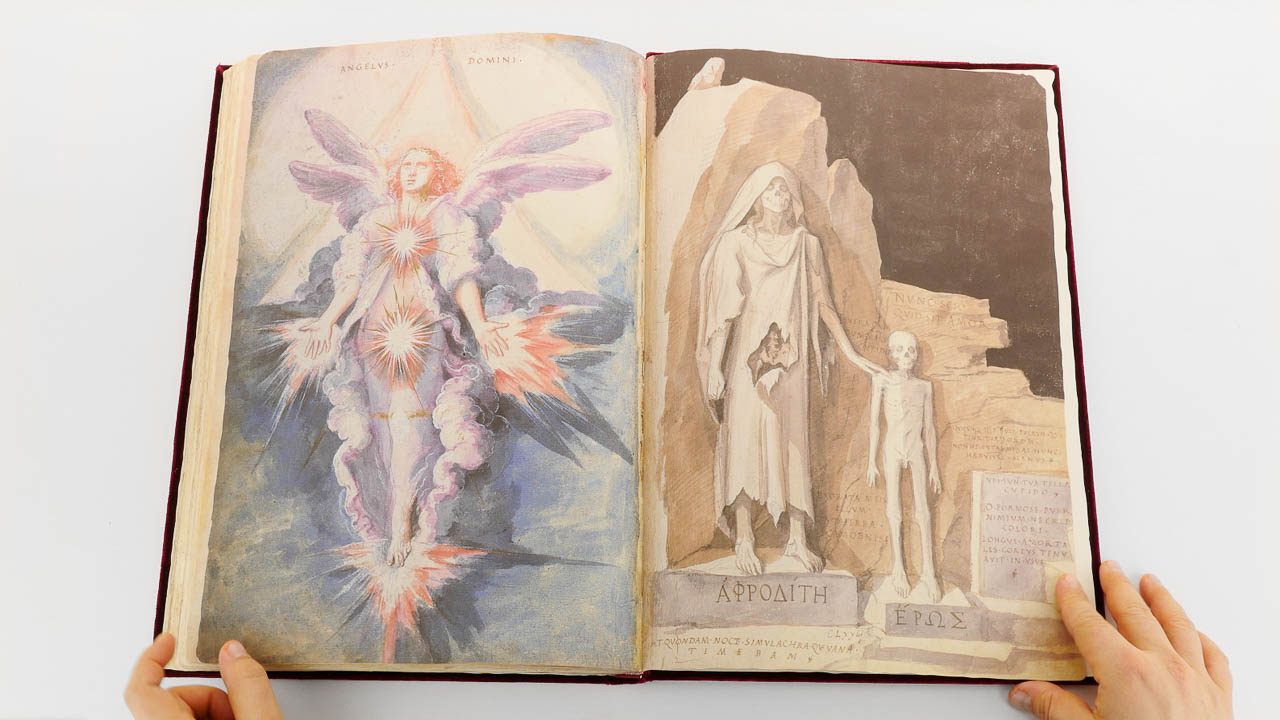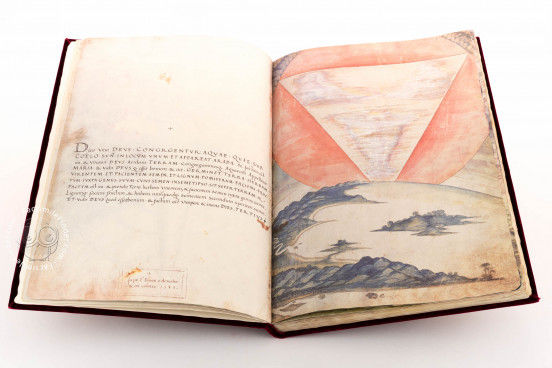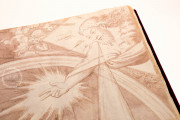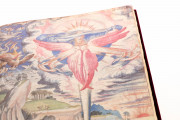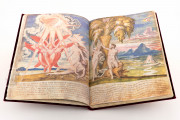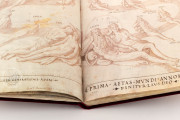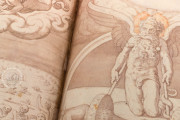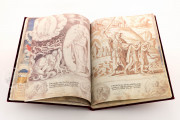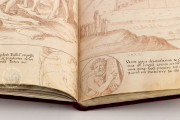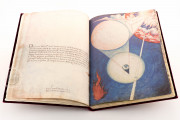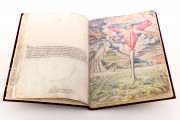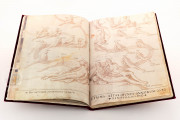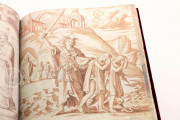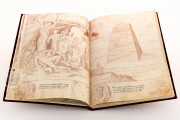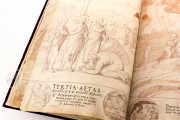De Aetatibus Mundi Imagines (On the Ages of the World) is a significant 16th-century illuminated manuscript created by Francisco de Holanda (1517-1584), a Portuguese artist and humanist. This remarkable codex represents a visual chronicle of world history divided into six ages, following biblical chronology while incorporating elements of secular history. Rather than serving as mere biblical illustrations, the manuscript employs sophisticated visual allegory to contrast the transience of earthly existence with the permanence of eternity—depicting temporal life in muted tones while representing eternity in vibrant colors. The manuscript stands as an exceptional example of Renaissance art from the Iberian Peninsula that combines theological depth with artistic innovation.
Historical Context
The manuscript was created following Francisco de Holanda's formative period in Italy, where he was sent by King João III of Portugal specifically to study Renaissance art between 1538-1540. During this pivotal sojourn, Holanda became a student of Michelangelo Buonarroti, studying under the master for approximately two years. This direct contact with one of the greatest artists of the Italian Renaissance profoundly influenced Holanda's artistic development and is clearly evidenced in his work.
Upon his return to Portugal in 1540, Holanda applied his newly acquired Renaissance techniques and perspectives to create this manuscript. The influence of Michelangelo is particularly apparent in the opening sections depicting the creation of the world, which bear striking similarities to the Genesis scenes in the Sistine Chapel, which Holanda had the opportunity to observe while they were still being completed.
Allegorical Illustrations
The manuscript is distinguished by its powerful illustrations executed primarily in gouache and wash techniques. The images are remarkable for their visual strength and sophisticated allegorical complexity, displaying a surprisingly modern artistic sensibility that seems to transcend their 16th-century origins.
As scholar Sylvie Deswarte has demonstrated, the illustrations follow an "Ordo Imaginum" (order of images) that reveals a complex theological and historical framework. The images are not simple biblical illustrations but rather sophisticated visual interpretations that draw from multiple sources, including Eusebius, the Septuagint, and Hebrew texts.
Holanda's visual program meticulously integrates biblical narrative with pagan history, demonstrating his familiarity with contemporary humanist scholarship. His illustrations show evidence of consulting not only biblical texts and patristic writings (particularly the Church Fathers and Late Antique Christian poets like Prudentius), but also contemporary historical works such as the Nuremberg Chronicle and the synchronic tables from Nicolau Coelho do Amaral's Chronologia.
A distinctive feature of the manuscript is its allegorical contrast between temporality and eternity, with earthly existence portrayed in subdued gray tones while eternal life is depicted in vibrant, full-color imagery—a visual theology that communicates the Christian understanding of salvation history.
An Informative Script
While the manuscript is primarily valued for its illustrations, any textual elements would be executed in the humanistic script typical of Renaissance manuscripts, reflecting the broader return to classical forms that characterized the period. The text serves primarily to identify scenes and provide context for the visual program rather than to offer extensive narrative content, as the manuscript's primary mode of communication is visual rather than textual.
We have 1 facsimile edition of the manuscript "On the Ages of the World": De Aetatibus Mundi Imagines facsimile edition, published by BiblioGemma, 2007
Request Info / Price
